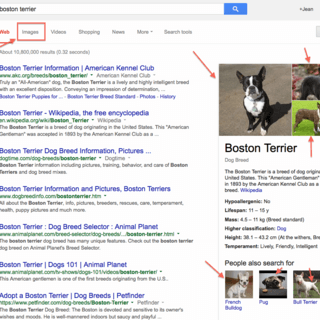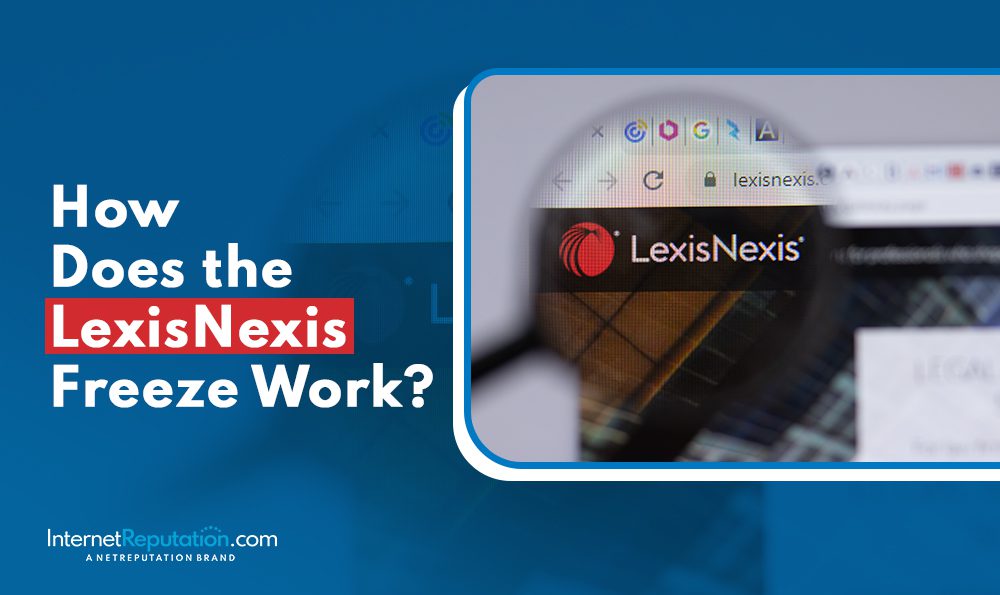Image Reputation Management: Your Secret Weapon

A little image reputation management can go a long way to cleaning up your online image.
It’s been said that a picture is worth a thousand words. That’s especially true on Google. Just look at how many photographs of wee dogs come up on a simple search for the term “Boston terrier.” Little puppy faces are all over my search results page, and I can click on that “images” button up top to see even more
Images like this have power, as a Search Engine Journal piece points out, because 63 percent of people who click on an image in a Google search then go to visit the website that hosted that image.
Let’s think about that for a minute.
If you were facing some kind of reputation attack, you might figure out what keywords stood behind that attack, and you might write content that contains those keywords. But it might be really hard for you to crowd out the content that’s already up there.
Images can help, as they appear on their own on a Google search. If your words aren’t getting through, maybe your pictures will.
Plus, if you share those photos on social media sites like Facebook, you might get even more oomph for the words you wrote, as Socialbakers.com suggests that some 87 percent of all interactions on Facebook start with a photo. People like snaps and they share them. If you need to drive traffic to something you’ve written, photos can make that happen.
But that’s true only if you can take really great photos. Here’s how to do it.
Image Reputation Management: Three Photography Tips for Beginners
Since few among us are professional photographers, I thought it might be helpful to include a few tips on taking perfect snaps.
1. Invest in good equipment.
If you’re already carrying around an Apple product, like an iPhone or a tablet, you already have a very powerful camera that can take perfectly amazing photos. And there are no fancy programs to learn or layers of buttons to push. You’ll just point and shoot.
But if you have a phone that’s several years old, and you don’t have access to a decent digital camera, now’s the time to make an investment. Since you’re going for professional-grade photographs, you simply must have equipment that can deliver the right snaps. Otherwise, you’ll be wasting precious photography time on images you’ll never use.
2. Stick with the reputation management subject at hand.
The photos with the most impact tend to have only one or two interesting flecks in the shot. That means you’ll need to think about what you want the photo to say, and then work on including only that element in the photo. Often, that means thinking about what your companion piece is about, and then trying to take a shot that demonstrates your point with images as well as words.
Here’s an example. If I was facing a reputation attack about a childcare facility, and I was attempting to write a blog post about how clean I keep the kitchen at the facility, I might choose to take a snap of:
- A sink full of bubbly water
- A sponge full of soap bubbles
- A bucket full of kitchen cleansers
- Two hands washing a plate
All of these photos have the potential to be gorgeous and pleasant, but they’re all quite focused on one topic. I’m not wobbling all over the place with the things I’m including in my images. I’m sticking to my theme.
3. Use a tight focus.
Photos on websites tend to be small. And if users hop online via cellphone, the images get even smaller. That’s why it’s vital for you to zoom right up on the things you’re photographing. That makes the theme pop just a little more, and it makes the photos a touch more interesting.
According to Kodak, the average camera can focus up to about 3 feet, so if you’re using a standard camera, you won’t want to stand any closer than that. But, a cell phone camera or digital camera might allow you to get yet closer. You’ll need to experiment and play in order to determine where to stand in order to get the shots you need.
Making Your Photos Work Against Your Reputation Attack
Once you’ve taken your masterful snaps, load them into your blog entries and press releases. It’s perfectly acceptable to use just one photo per entry, but if you have multiple shots you like, sprinkle them throughout the text. You’ll get a touch more attention that way, and each image will be indexed by Google.
Then, share that photo on your social media sites. MarketingProfs suggests that posts with images are most effective when the text includes the word “share,” so you’ll want to include a sentence below the image that reads a little like this: “I’ve written a new blog entry I’m excited about. Please share it!”
Other Options to Use
Now, if you’re not at all interested in learning image reputation management, or you’re simply convinced that the images you could take won’t be good enough for Google, you could use a stock photography site. There are plenty of them out there, and they’d all love to get a little revenue from bloggers like you.
But, remember that the goal is to get unique content indexed by Google, so that people will come back to you and your website. If that’s the case, it makes no sense to buy photos. Doing so means throwing away opportunities.
Would you like to find out more about the reputation attacks you should be fighting? We hope so. Click here to use our monitoring tool, and keep track of everything everyone is saying about you online.



